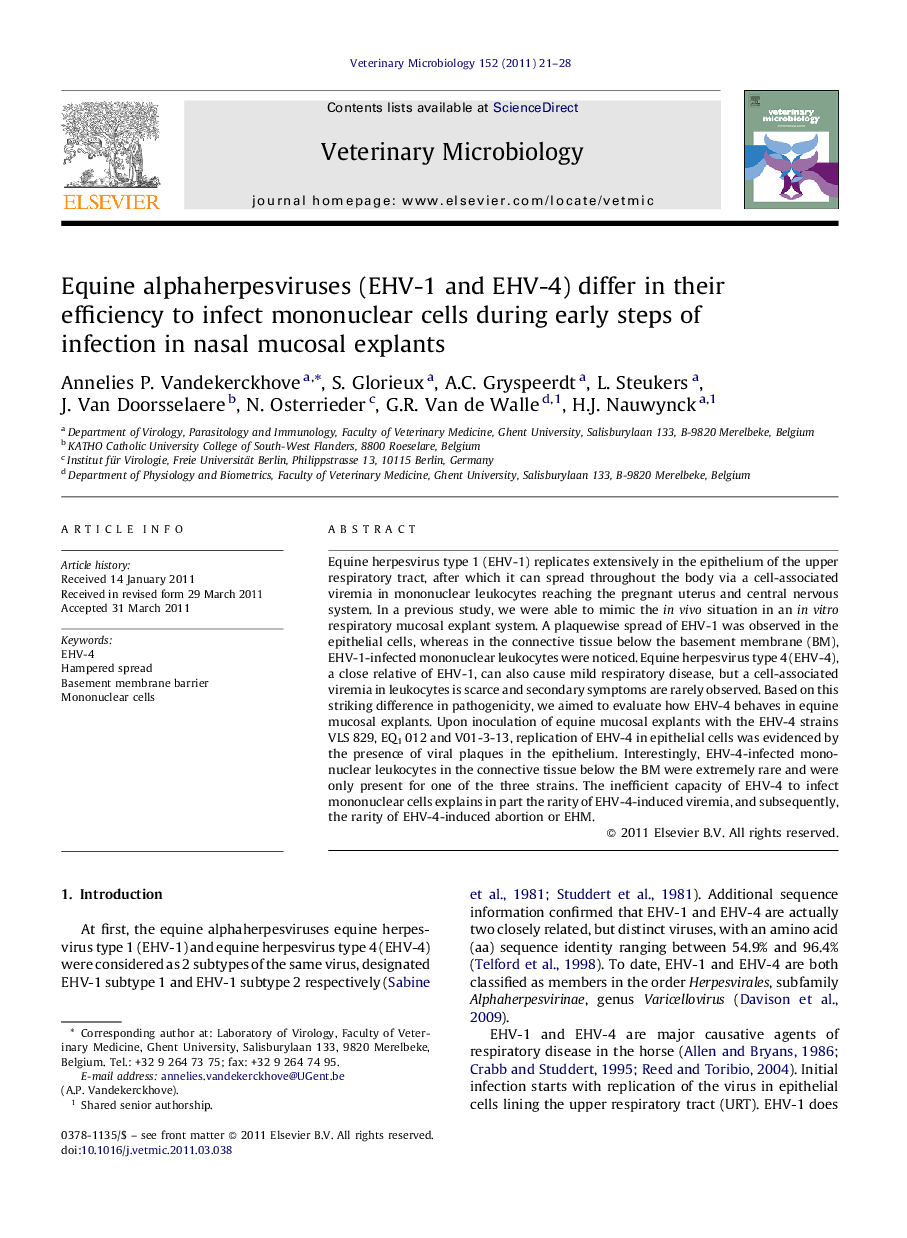| کد مقاله | کد نشریه | سال انتشار | مقاله انگلیسی | نسخه تمام متن |
|---|---|---|---|---|
| 2467562 | 1555397 | 2011 | 8 صفحه PDF | دانلود رایگان |

Equine herpesvirus type 1 (EHV-1) replicates extensively in the epithelium of the upper respiratory tract, after which it can spread throughout the body via a cell-associated viremia in mononuclear leukocytes reaching the pregnant uterus and central nervous system. In a previous study, we were able to mimic the in vivo situation in an in vitro respiratory mucosal explant system. A plaquewise spread of EHV-1 was observed in the epithelial cells, whereas in the connective tissue below the basement membrane (BM), EHV-1-infected mononuclear leukocytes were noticed. Equine herpesvirus type 4 (EHV-4), a close relative of EHV-1, can also cause mild respiratory disease, but a cell-associated viremia in leukocytes is scarce and secondary symptoms are rarely observed. Based on this striking difference in pathogenicity, we aimed to evaluate how EHV-4 behaves in equine mucosal explants. Upon inoculation of equine mucosal explants with the EHV-4 strains VLS 829, EQ1 012 and V01-3-13, replication of EHV-4 in epithelial cells was evidenced by the presence of viral plaques in the epithelium. Interestingly, EHV-4-infected mononuclear leukocytes in the connective tissue below the BM were extremely rare and were only present for one of the three strains. The inefficient capacity of EHV-4 to infect mononuclear cells explains in part the rarity of EHV-4-induced viremia, and subsequently, the rarity of EHV-4-induced abortion or EHM.
Journal: Veterinary Microbiology - Volume 152, Issues 1–2, 26 August 2011, Pages 21–28